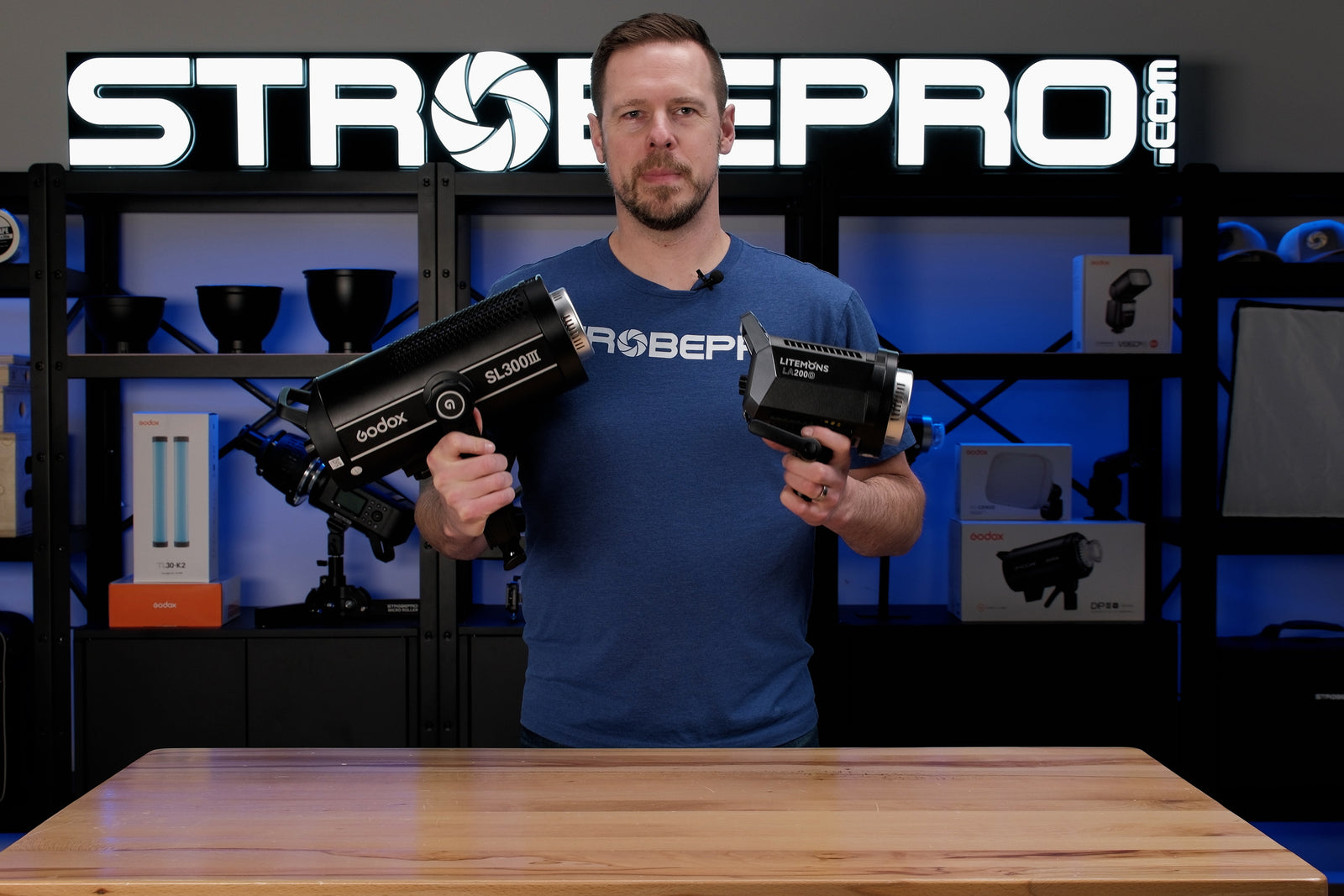FREE PURO/UPS SHIPPING ON ORDERS OVER $99 + FREE 2 YEAR WARRANTY*
Menu
-
-
LIGHTING
- Battery Strobe Lights
- Plug-In Strobe Lights
-
Speedlite Flash
- Compare All Speedlite Flash
- Godox iT32 Modular Speedlite (NEW)
- Godox V480 Lithium Speedlite
- Godox TT685II Speedlite
- Godox V860iii Lithium Speedlite
- Godox Round Head Speedlites (V1-V1Pro-V100)
- Godox Mini Speedlites (iM30 - iT30 Pro)
- Godox Lux Retro Speedlites
- Godox MF12 Macro Flash Kit
- Radio Triggers
- Speedlite Modifiers
- Speedlite Brackets
- LED Lights
- Radio Flash Triggers
-
STUDIO GEAR
- New
- Boxing Week
-
-
About Us
-
Help Desk
- Contact
- My Wishlist
- Rental
- Earn Free Gear
- Blog
- 1-403-474-9793
- Login

FREE PURO/UPS SHIPPING ON ORDERS OVER $99 + FREE 2 YEAR WARRANTY*
Add description, images, menus and links to your mega menu
A column with no settings can be used as a spacer
Link to your collections, sales and even external links
Add up to five columns
Add description, images, menus and links to your mega menu
A column with no settings can be used as a spacer
Link to your collections, sales and even external links
Add up to five columns

Do These LEDs Have the Same Output?
May 02, 2023 2 min read 0 Comments
Are These Specs for Real?
Comparing LED products from specifications tables alone can be quite a challenge. You want to make a good buying decision, but the numbers just aren't adding up! The team here at Strobepro took a closer look at an example from our own product lineup.
The manufacturer states that the Godox SL300iii has a measured lux (1m) of 99,300 with its standard reflector. Interestingly, the Litemons LA200D is reported to be slightly brighter at 101,000 lux using the same reflector. How can this be possible? Why would anyone want the bigger, heavier, and more expensive option if it's not any brighter?
How is Lux Measured?
The first thing we should consider is that lux is only a measure of centre point brightness. This means that the measurement should be taken with some care. Everything needs to be level, on target, and at the precise distance specified.
To check Godox's measurements, we conducted our own test with our Sekonic C-800 at 1m with the stock reflector. We got the following results:
SL300iii: 106,000 lux
LA200D: 95,600 lux
There certainly could be some measuring error on either side, but perhaps we're moving in the right direction now? ...No not really. It's still just too close! The SL300iii should be brighter by a much larger margin. So why is it underperforming against the LA200D?
The Reflector
Godox's standard reflector for its LEDs (also used in the Litemons line) is a long throw reflector that focuses light towards the centre. It's a good modifier to have attached if you are trying to put an impressive lux number on a specs sheet.
Or so we thought! It turns out that the result measured at the centre may actually see some sharply diminishing returns on larger LEDs. With the reflector removed (still at 1m), here were our new results:
SL300iii: 13,100 lux
LA200D: 6,940 lux
Finally, we're getting a much more expected result. In fact, the SL300iii went from under-performing to over-performing.
So What Happened?
As far as we can tell, the design of the included reflector only allows a certain area of the LED to be effectively focused to the centre where the lux reading is taken. Because the incident area of our more powerful LED is physically larger, it is not able to take full advantage of the stock reflector's design—at least not as far as a specifications table is concerned.
If we attach both lights to a larger modifier, the SL300iii comes out on top again. Here were the results for each light using our 20"x20" Rapid Snap Softbox:
SL300iii: 3,720 lux
LA200D: 1,620 lux
What Did We Learn?
While you can rest easy if you already purchased the more powerful light, comparative shopping can still be a bit of a challenge. If you want a better way to compare Godox lights, check out the Strobepro Power Scale! We just added these lights and a few others to the growing list.
If you're looking at other brands as well, keep our little test in mind. Any reflector used in a manufacturer's test can yield misleading results. Godox has started including a "no reflector" measurement in their tables, and a few other brands do as well. Try to use this number as your best way of comparing LEDs whenever it is available.
Subscribe
Sign up to get the latest on sales, new releases and more …